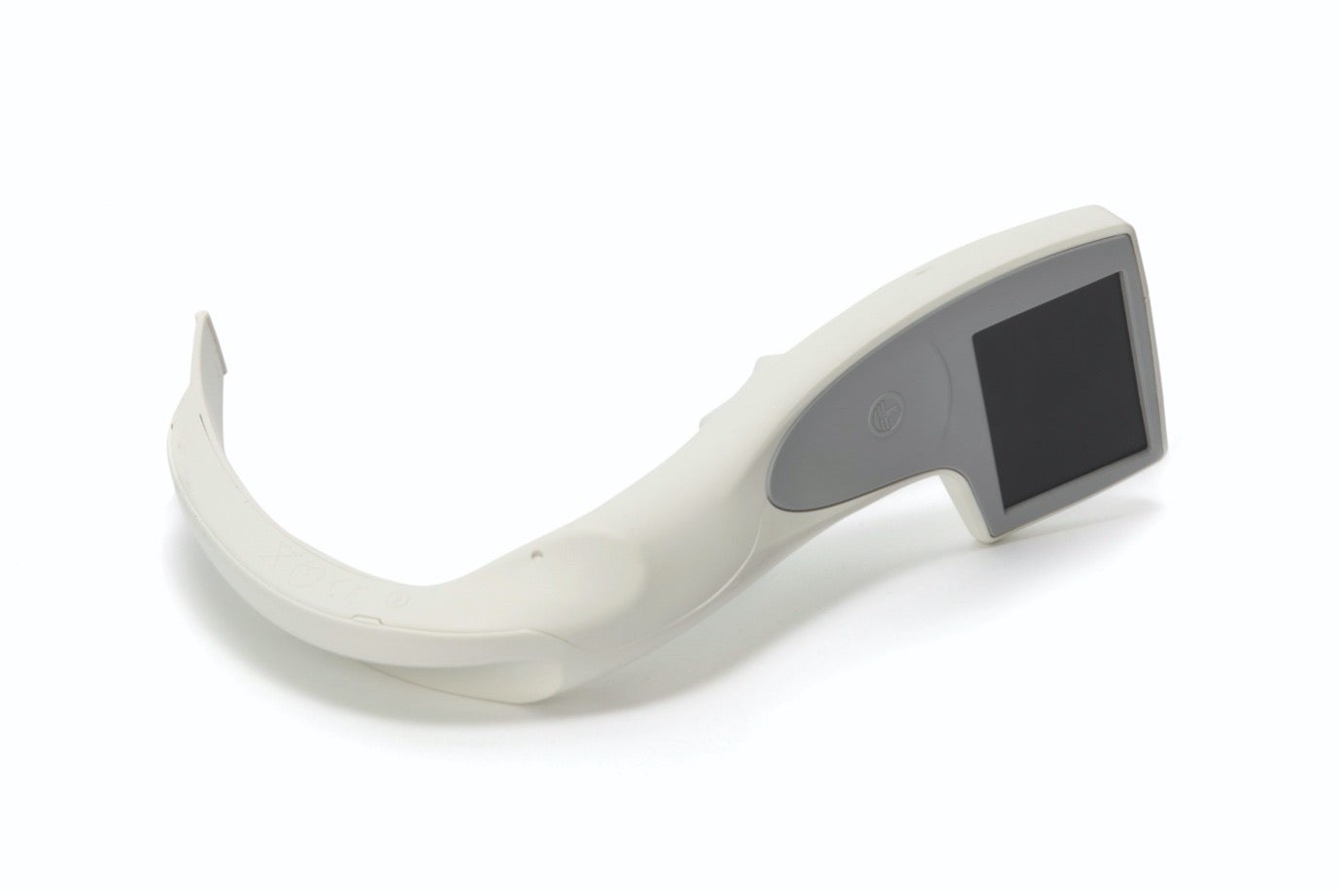
Prior to 2020, it was already well acknowledged that video laryngoscopes provide indirect visualisation of a patient’s airway to aid the correct positioning of a tube between the vocal cords and into the trachea.
The DAS (Difficult Airway Society) guidelines[1] consistently identify the importance of the first attempt at intubation to maximize the likelihood of successful intubation or, failing that, to limit the number and duration of attempts at laryngoscopy. This would prevent airway trauma and progression to a CICO (cannot intubate, can’t oxygenate) situation.
The Covid-19 pandemic has emphasised the importance of the first attempt to intubate patients efficiently and accurately, particularly when clinicians are in heightened stress situations. The pandemic has also raised the concerns of clinicians having to be in closer proximity to patients during intubation, with a greater focus on approaches that provide more distance between patient and clinician during intubation.
Video laryngoscopes provide better glottis views and first attempt intubation success. Where patients are critically ill, the importance of first attempt intubation success is even more acute, because an increasing number of attempts leads to greater risk of hypoxia, and other life-threatening complications.
Other hospital departments
However, it isn’t just during the Covid-19 pandemic where video laryngoscopes can make a difference to patient outcomes. In a study conducted by Cook and Kelly, published in the British Journal of Anaesthesia, following an electronic survey sent to all UK NHS Hospitals it was found that the availability of video laryngoscopes varied widely across different departments within a hospital.
The study reported that 91% of operating theatres had video laryngoscopes available to them. However, this dropped significantly to only 55% in Obstetric Departments, and down to 35% in Emergency Departments. It was found that the incidence of difficult, or failed intubation, increases in departments where video laryngoscopy is less available.[2]
The reason why video laryngoscopy may be used less frequently in these departments is likely, in part, down to costs. The implications of having a reusable video laryngoscope in low-use departments may make it cost prohibitive to do so. However, a single use device with a much lower unit cost, and where use is infrequent, may be a more viable option. This is where the i-view TM from Intersurgical leads the way.
i-viewTM from Intersurgical
The i-view TM from Intersurgical is the first single use, fully disposable, adult video laryngoscope with a Macintosh blade. This provides the option of video laryngoscopy wherever intubation may be required. The i-view TM can be used for both video and direct laryngoscopy because of the incorporation of a Macintosh blade. The Macintosh blade is more familiar compared to other types of blades and makes it the ideal device to use in an emergency setting.[3]
The ergonomic design ensures the i-view TM is easy to operate and ready to use seconds after being removed from its packaging. The integral TFT-LCD screen, supplied by GSR Technology, provides optimal viewing angles in a variety of light conditions. Utilising the latest in LED backlight technology, the display has a high brightness, suitable for use in brightly lit environments like operating rooms. The display needs to be lightweight, and this is achieved by making the display module as thin as possible, in this case only 2.2mm.
To learn more about the i-view TM laryngoscope, watch this video.
Video laryngoscopes use the latest display and full integrated camera cube technology to provide an optimal (indirect) view of the larynx during intubation, and the i-view TM from Intersurgical is no exception.
Whilst the display is key to the visual performance of the laryngoscope, as important is the state-of-the-art camera cube, supplied by GSR Technology, as part of a flexible PCB assembly. The camera is a CMOS image sensor camera cube chip. Using a single chip camera and image processor with a very small footprint is key because it is capable of being reflow soldered to the FPC to maximise production efficiency.
GSR Technology also supplies a wide viewing angle LED as part of the FPC assembly. The LED enables the image from the camera cube to be clearly visible on the display. To ensure continuity between products, GSR Technology purchases only from specific colour and brightness bin grades, so that there is no discernible difference in performance from one product to another.
GSR Technology Europe Ltd supplies the TFT display and FPC assembly for final assembly into the i-view TM laryngoscope at Intersurgical’s state of the art manufacturing facility in Wokingham, UK, ready for global distribution.
Infection control
The Association of Anaesthetists of Great Britain and Ireland (AAGBI) confirmed in their safety guideline booklet in 2008 that in relation to standard laryngoscopes, “current practices for decontamination and disinfection between patients are frequently ineffective, leaving residual contamination that has been implicated as a source of cross-infection.” The AAGBI went on to note that “blades are also regularly contaminated with blood, indicating penetration of mucous membranes, which places these items into a high-risk category.’[4]
The guidelines concluded that the use of single use blades was “to be encouraged”. This infection control would also apply to video laryngoscopes because regardless of whether direct or indirect, there will always be some form of handle and blade.
GSR Technology Europe Limited
GSR Technology is a leading pan-European company, based in West Oxfordshire, UK. It’s core products include TFT-LCD displays in a comprehensive range of sizes, from 1.0”-43”.
GSR also offers a wide range of industrial and medical grade monitors, and medical grade panel PCs. Most of GSR’s display products can be customisable, and are available with a range of features such as ‘touchless’ interface or antimicrobial coatings. GSR’s fully customisable touchscreens can be designed to offer multiple user interfaces, including glove touch, palm rejection, water resistance, and thickened glass touch.
GSR provides medical grade products into multiple applications within the hospital setting, from paediatric ventilators and inpatient nurse call stations, to oxygen gas level monitors and patient check-in stations.
Visit our website to see the full range of products and services that are offered.
[1]Higgs, A, McGrath, B.A, Goddard, C. Rangasami, J. Suntharalingam, G. Gale, R, Cook, T.M, Guidelines for the management of tracheal intubation in critically ill adults. British Journal of Anaesthesia. 2018; 120 (2): 323-352
[2] Cook TM and Kelly FE, National Survey of Laryngoscopy in the United Kingdom. British Journal of Anaesthesia. 2017; 118: 593-60
[3] www.uk.intersurgical.com/info/iview
[4] Infection Control in Anaesthesia 2. Association of Anaesthetists of Great Britain & Ireland. 2008


